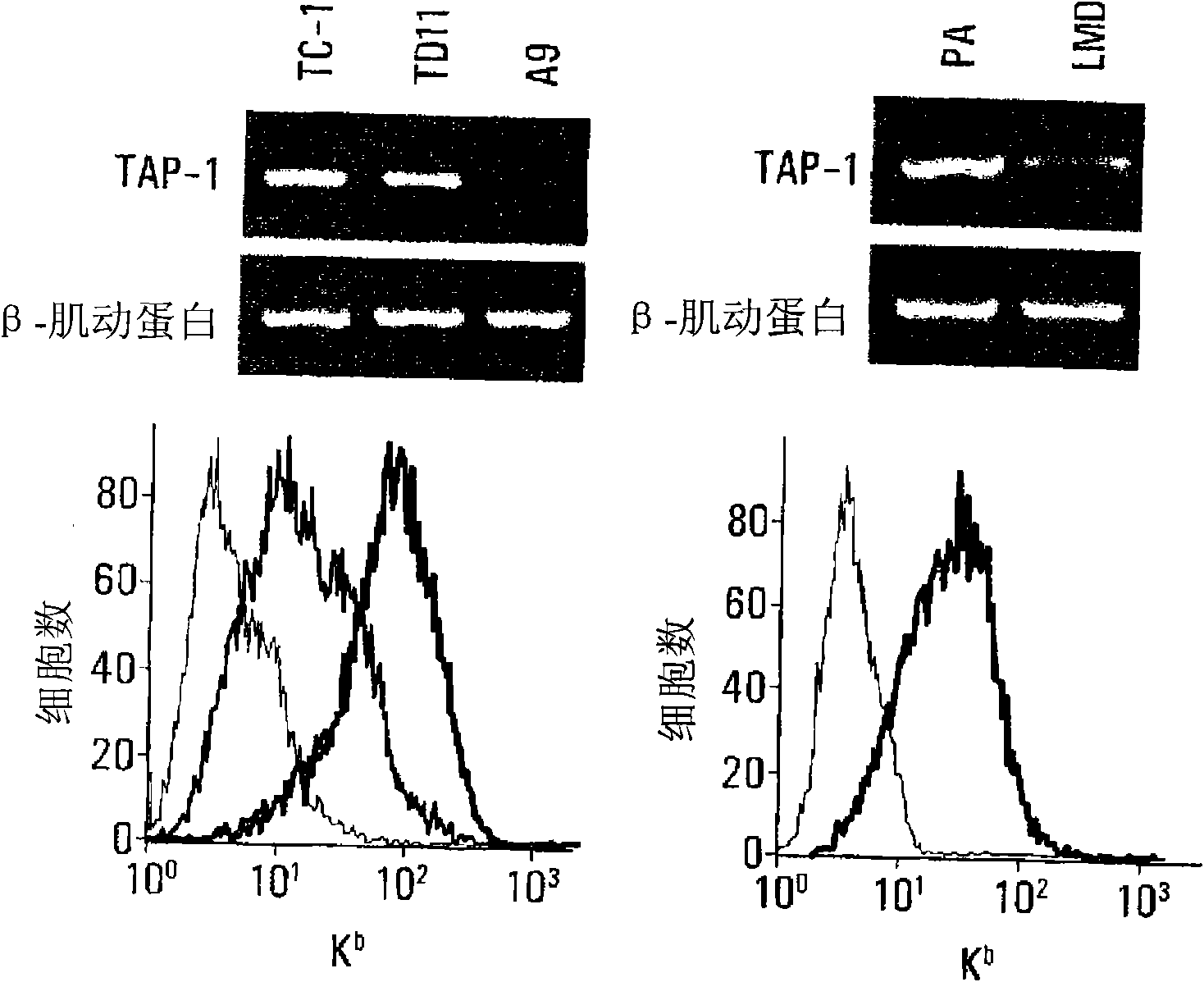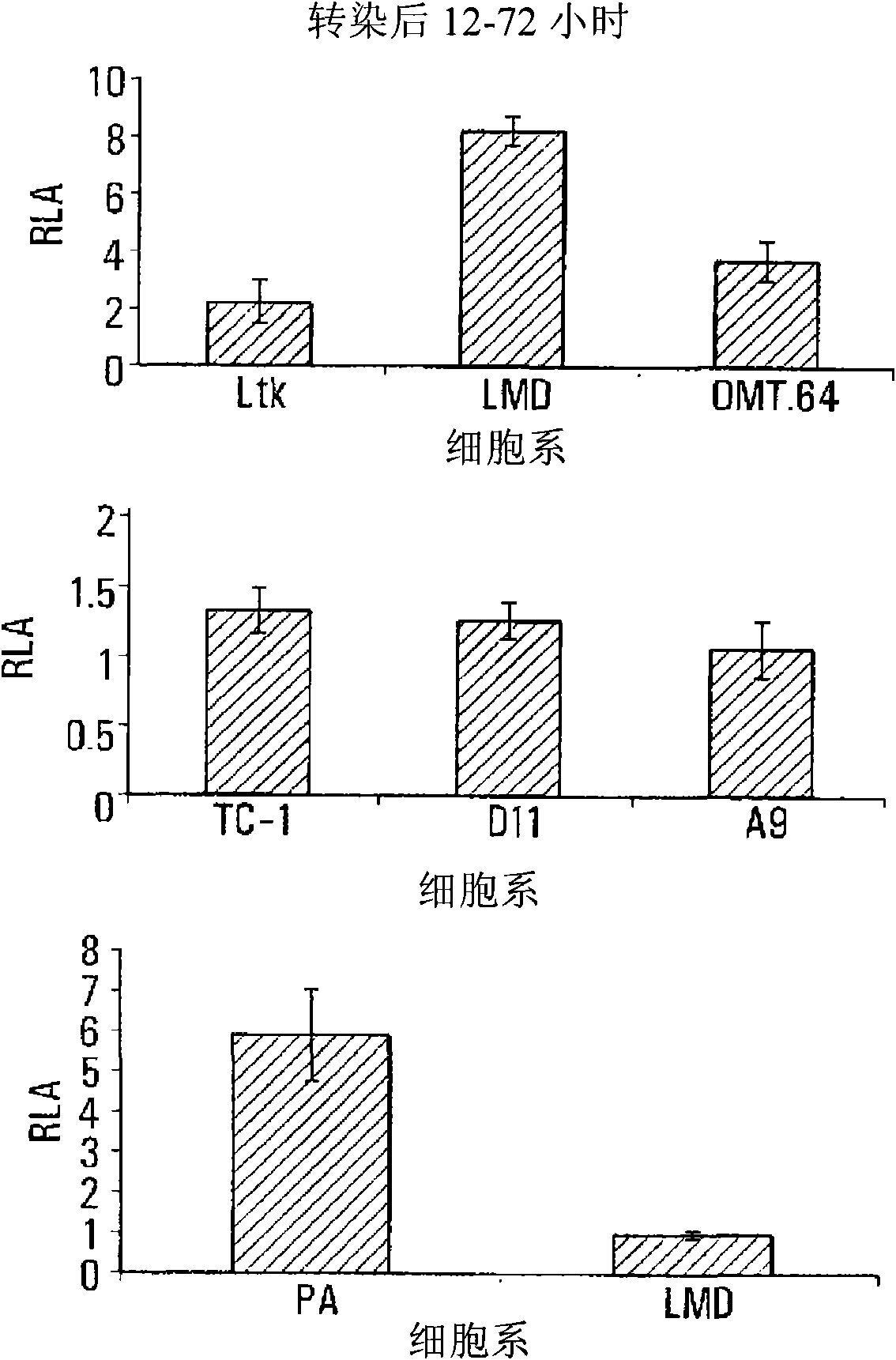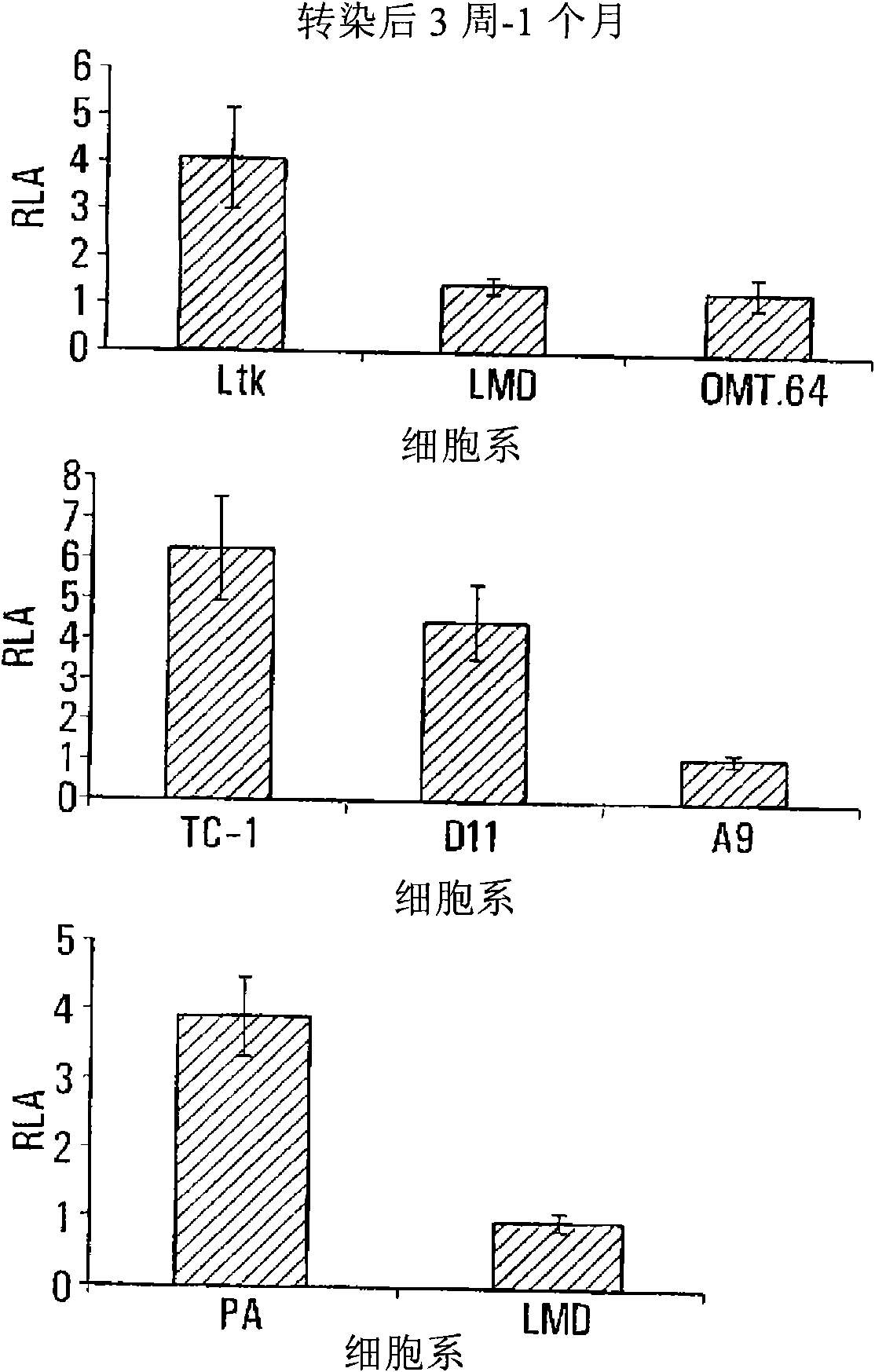Hat acetylation promoters and uses of compositions thereof in promoting immunogenicity
A technology of composition and use, applied in the field of HAT acetylation promoter and its composition in promoting immunogenicity, can solve the problems of low expression of TAP, insufficient expression, lack of proteasome components, etc.
- Summary
- Abstract
- Description
- Claims
- Application Information
AI Technical Summary
Problems solved by technology
Method used
Image
Examples
example 1
[0045] Using the reagents and procedures described above, it was shown that EP-1 mRNA expression correlates with its surface MHC class I expression in a mouse prostate cancer model and in an HPV-positive cancer model.
[0046] TAP-1 expression levels were demonstrated to correlate with MHC class I surface expression levels in both cell lines used (mouse prostate cancer and HPV positive cancer models). These results are shown in figure 1 middle. After transfectants become stable, expression of the luciferase gene under the control of the TAP-1 promoter generally matches endogenous TAP-1 levels. figure 1 A shows the analysis of TAP-1 and surface MHC class I expression by RT-PCR and flow cytometry, respectively. Shaded areas, thin lines and thick lines represent low (A9 or LMD), medium (D11) and high (TC-1 or PA) levels of MHC class I expression, respectively. Amplification of P-actin cDNA was used as an internal control in the RT-PCR analysis. Data are representative of th...
example 2
[0048] The role of chromatin remodeling in the regulation of TAP-1 transcription has been investigated. Previous observations by fluorescence microscopy and flow cytometry revealed that, days after transfection of several panels of TAP-expressing and TAP-deficient cell lines with a reporter construct containing the EGFP gene driven by the TAP-1 promoter, TAP-deficient Multiple cells in the TAP-expressing group expressed similar or even higher levels of EGFP relative to the majority of cells in the TAP-expressing group (data not shown), whereas EGFP expression levels in stable transfectants matched the endogenous TAP-1 expression profile (Setiadi et al., Cancer Res, 65, 7485-7492). In this experiment, a luciferase reporter construct was generated by cloning the mouse TAP-1 promoter (pTAP1-luc) upstream of the luc gene in the pGL4.14[luc2 / Hygro] vector and transfected into cells Department. Based on previous observations of EGFP levels, expression levels of the luc gene were f...
example 3
[0050] Example 3 Evidence that histone H3 acetylation is lower at the TAP-1 promoter in MHC class I-deficient carcinoma.
[0051] This experiment investigates the level of histone H3 acetylation at the TAP-1 promoter in murine prostate and cervical cancer cell lines to determine the role of histone H3 acetylation in the regulation of TAP-1 transcription. Although histone H3 is not the only class of core histones whose modifications have been shown elsewhere to have a role in the expression of various genes, since the association between histone H3 tail acetylation and the activation of various genes has been extensively studied and is now has been widely accepted [9, 10, 11], so this experiment studies its acetylation status.
[0052] According to the RNA pol II level in the TAP-1 promoter and the TAP-1 transcription level ( figure 1 and 2), it was found that the level of acetyl-histone H3 was lower in the TAP-1 promoter in cells expressing lower TAP-1 levels (Figure 2). ...
PUM
 Login to View More
Login to View More Abstract
Description
Claims
Application Information
 Login to View More
Login to View More - R&D
- Intellectual Property
- Life Sciences
- Materials
- Tech Scout
- Unparalleled Data Quality
- Higher Quality Content
- 60% Fewer Hallucinations
Browse by: Latest US Patents, China's latest patents, Technical Efficacy Thesaurus, Application Domain, Technology Topic, Popular Technical Reports.
© 2025 PatSnap. All rights reserved.Legal|Privacy policy|Modern Slavery Act Transparency Statement|Sitemap|About US| Contact US: help@patsnap.com



